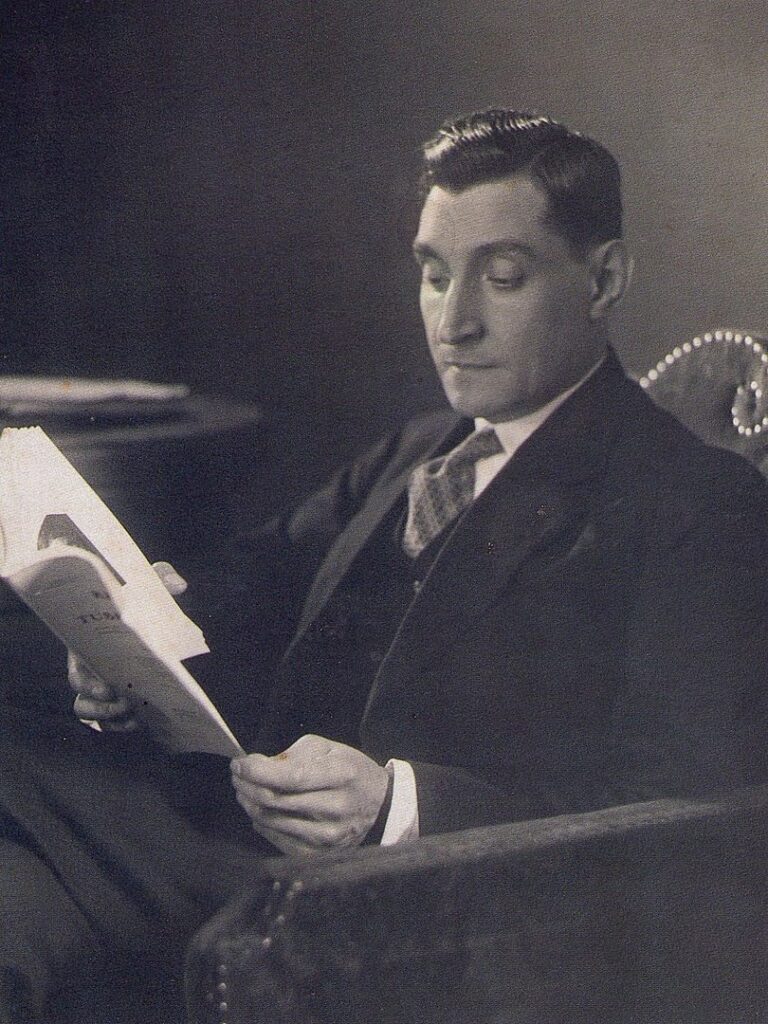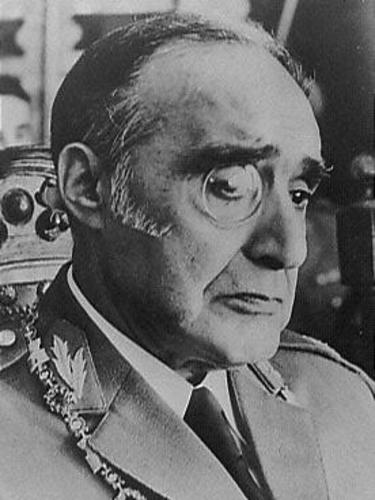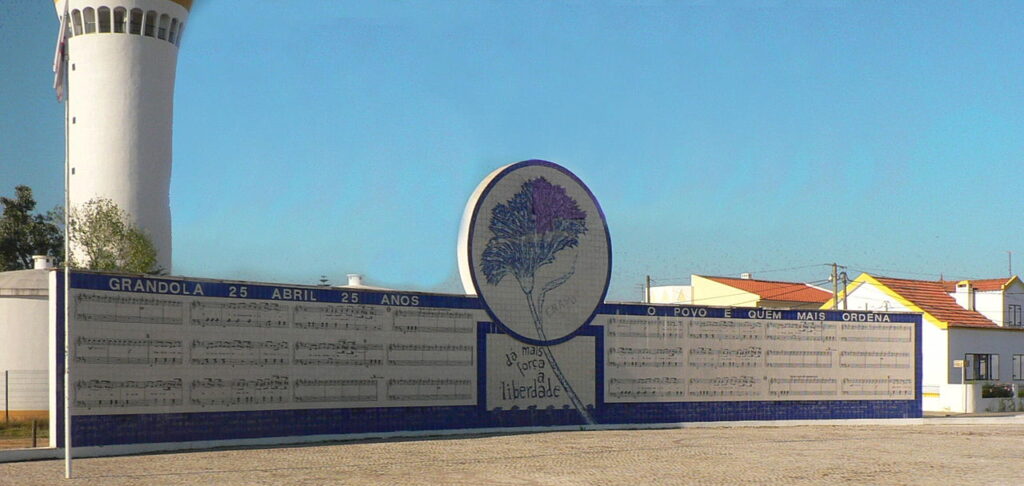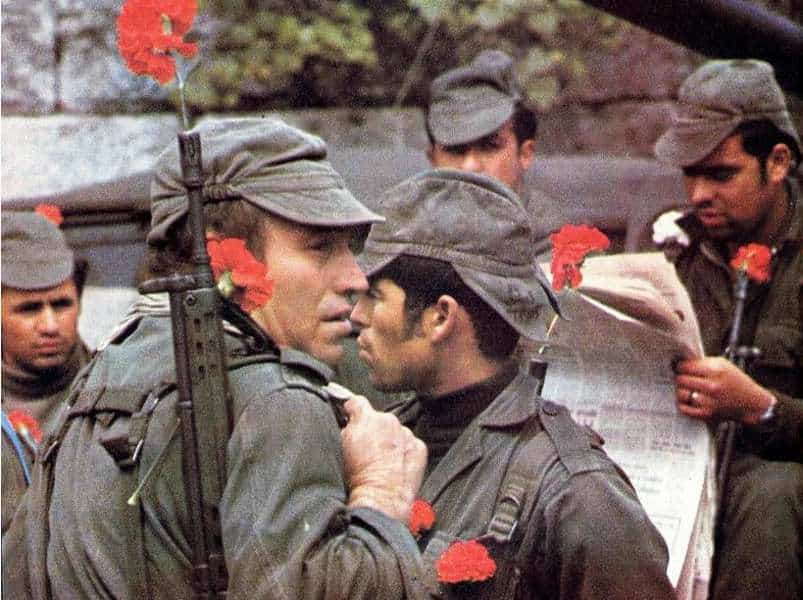Soon after Ana and I had made a brief stop at the Pastelaria Alcôa for a late morning snack of pastéis de nata we had a brief delay on our walk toward the Largo do Carmo when we happened upon a small crowd who had gathered around an older woman who had fallen down and, in my estimation, had fractured her wrist. The woman was upset and adamant in refusing assistance even with her grandson standing nearby. Somehow Ana managed to calm her and, in her generous Portuguese way, convinced her to allow us to escort them to the café where the boy’s mother worked. As we started back on our way to the square, Ana resumed her story about the 25th of April and
The Carnation Revolution
As is universally the case, we need to take at least a brief look at history to gain a degree perspective and in this instance we need to start in 1933 when what became the Estado Novo (the government that would be ousted on 25 April) evolved from a military coup that occurred on 28 May 1926.
Estado Novo was an autocratic authoritarian regime ruthlessly led by António de Oliveira Salazar who relied on secret police to enforce his policies and authority. Although repressive and brutal, Salazar’s regime brought an element of governmental stability that few Portuguese had experienced. For example, between 1910 and 1926, the country had more than 40 prime ministers. In their longing for stability, the Portuguese were initially tolerant of some of Salazar’s tactics and this allowed him time to consolidate the power that he wielded ruthlessly for more than four decades.

(António de Oliveira Salazar – Wikimedia Commons – Author unknown)
Salazar suffered a cerebral hemorrhage in August 1968 and on 25 September, President Américo Tomás appointed Marcelo Caetano as Portugal’s new prime minister. Caetano came along after more than a decade of unrest in former European colonies that had begun in 1957 when the one time British colony of Gold Coast became the independent country of Ghana. This marked the beginning of a two decade period during which more than 40 African republics would emerge from European colonial rule.
Salazar had tenaciously held on to the Portuguese colonies in spite of a rising tide of anticolonialism both at home and abroad and, while Caetano adopted a slightly more conciliatory approach in his domestic policies, he continued Salazar’s adamant colonialism. By the early seventies, Portugal, bent on resisting decolonization, had been engaged for more than a decade in unpopular wars with Portuguese Guinea (today Guinea-Bissau), Mozambique, and Cape Verde.
In February 1974, General António de Spínola

(Wikipedia By-Keystone-Press-Nationaal-Archief-CC-BY-SA-3.0.)
published a book called Portugal and the Future in which he advocated negotiated autonomy for the colonies and an end to Caetano’s leadership. The book led to his dismissal from the army in March of that year. But it remained influential.
A group of left-leaning dissident and low ranking officers who supported Spinola and his ideals secretly formed the Movimento das Forças Armadas (Armed Forces Movement or MFA). Although Spínola was the titular head of the coup movement, Major Otelo Saraiva de Carvalho planned the operation scheduled to began after the radio station Emissores Associados de Lisboa broadcast two secret songs.
Eurovision 1974
On 6 April 1974, this performance won the Eurovision song contest.
Of course, Abba went on to global fame and superstardom. That same night Paulo de Carvalho finished 14th with his performance of E depois do adeus (And after the goodbye).
When the Emissores Associados de Lisboa radio station aired both songs – first Waterloo then E depois do adeus – late on the night of 24 April 1974, it signaled Portuguese troops to begin the revolution. Thus, although I’m sure many Portuguese are fans of Abba, Carvalho’s song, is probably the more memorable moment from that Eurovision contest.
An anthem for the revolution
The singer-songwriter José Afonso, known as Zeca, was one of the most influential folk and protest musicians in Portuguese history. Zeca spent much of his adult life as a teacher – a position he lost in 1968 as his resistance to the Estado Novo grew more vocal and public. He performed periodically releasing an EP called Fados do Coimbra in 1956 but his first studio album, Baladas e Canções, wasn’t released until 1964. Despite his growing popularity, or perhaps because of it, both the Salazar and Caetano governments banned many of his songs from the airwaves. One song that wasn’t banned was Grândola, Vila Morena.
Its broadcast came shortly after midnight on 25 April as soldiers left their barracks and the tanks began to roll. The song went on to become the anthem of the revolution and is immortalized on a wall in the town of that name some 120 kilometers south of Lisbon,

(Wikimedia by Paulo Juntas)
It continues to be sung as a part of every Portuguese celebration of the revolution.
What in carnation?
The MFA met no resistance and within hours the airport, television, and radio stations were under rebel control as was the Salazar (now 25th of April) Bridge over the Rio Tejo (Tagus River). The prime minister and other government ministers and officials sought refuge in the Carmo barracks (now a museum on Largo do Carmo), which housed the National Republican Guard.

As the rebels marched on the barracks, they again encountered no resistance and Prime Minister Caetano surrendered to General Spínola.
Most sources list only four deaths as a result of the revolution. These four civilians, Fernando C. Gesteira, José J. Barneto, Fernando Barreiros dos Reis, and José Guilherme R. Arruda, were killed by the PIDE – the regime’s secret police. An additional 45 people were injured in the same assault.
However, a little digging unearths at least a fifth casualty – a 32-year-old General Directorate of Security agent named Antonio Lage. A local paper reported it the next day,
The weapons of the Army continued to be pointed at the headquarters of the DGS. The situation seemed to be deadlocked when one of the agents went out onto the street with his hands in the air to address the soldiers. As they watched him, the crowd cried out for his death. Terrified, the officer tried to flee, only stopping when a bullet from the Army struck him dead.
The crowds assaulted other PIDE and DGS agents whose lives were saved only when soldiers intervened. Still, it was a relatively bloodless coup that, in less than a day, ended more than 40 years of dictatorship in Portugal.
Okay. But where are the carnations?
On 25 April 1973 a self-service restaurant called Sir opened in Lisbon at the Franjinhas Building on Rua Braamcamp. For its first anniversary the owners planned to give out flowers to all its customers and sent one of their employees, 41-year-old Celeste Martins Caeiro to purchase them. The only flowers available were carnations and as Celeste tried to return to the restaurant, the coup intervened. Rather than waste the red and white flowers, she offered them to the soldiers who placed them in the muzzles of their guns. She forever became known as Celeste dos cravos (Celeste of the carnations). After learning of her actions, florists from all over the country donated more flowers to decorate the soldiers’ weapons and the populace flooded the streets delivering them in celebration.

(From ADST.org)
In addition to being relatively bloodless, the Carnation Revolution was noteworthy in at least one other way. A typical military coup usually leads to some sort of dictatorship or to a government that is superficially democratic but not functionally so.
Recalling the events of the time, one journalist who had reported on the revolution said, “It was a coup like no other. The atmosphere was more like a party. None of us had ever heard of an army intervening to bring democracy. Surely it’s normally the other way round.”
In the immediate days after 25 April, General Spínola was installed as interim president. He was succeeded by general Francisco de Costa Gomes at the end of September 1974 and the initial ruling authority was called the Junta de Salvação Nacional (National Salvation Junta or JSN).
The following months were somewhat chaotic with attempted counter-coups, but the JSN remained in place and the Portuguese Constituent Assembly election was held on the one year anniversary of the revolution. An election held the following year saw the first constitutional government come into power with Mário Soares of the Socialist Party becoming prime minister. After decades of chaos followed by decades of dictatorship, Portugal has now become one of Europe’s most stable democracies.
Just another Carnation on any given Revolutionary day.
The super-secret ABBA song set things in motion sorta
and.. won the Eurovision competition too just say’n.
Good stuff Todd.
Shell
Kinda cool, though.